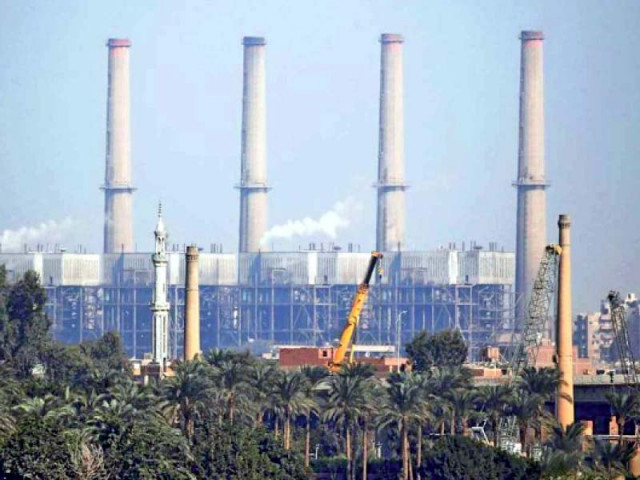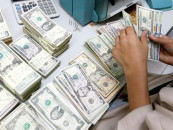Two decades of flawed policies: Power producers make billions in Pakistan
Inquiry reveals independent power producers in Pakistan made excessive profit due to flawed policies

The inquiry committee analysed power projects set up under different policies introduced since 1994 and the volume of excess payments due to higher rates of return on equity. PHOTO: REUTERS
The committee has recommended the recovery of all excess payments that amount to Rs1,000 billion. However, close aides of Prime Minister Imran Khan, who have been among beneficiaries in the power sector, have cautioned that it may lead to a legal battle.
The inquiry committee analysed power projects set up under different policies introduced since 1994 and the volume of excess payments due to higher rates of return on equity. It also raised questions about the two coal-based power plants set up under the China-Pakistan Economic Corridor (CPEC).
The committee, headed by former Securities and Exchange Commission of Pakistan (SECP) chairman, has now recommended a forensic audit of the power sector and recovery of all excess payments. It has also recommended shifting from the dollar-based rate of return to the one based on Pakistani rupee.
Power Policy 1994
The inquiry committee said 16 out of 17 projects invested a combined capital of Rs51.80 billion and earned profit of over Rs415 billion as well as took out dividends of Rs310 billion based on financial statements available with the National Electric Power Regulatory Authority (Nepra) and SECP.
Power Policy 2002
Under this policy, 13 residual fuel oil (RFO) and gas-based power plants with combined capacity of 2,934 megawatts were established.
In the past eight to nine-year operational period, these companies earned Rs203 billion in profit against combined investment of Rs57.81 billion. Even after adjustment for debt, the companies earned Rs152 billion and made dividend payments to the tune of Rs111 billion. The individual profitability varied among the power plants as some made a higher profit with average rate of return of 87% and dividends up to seven times of their investments.
It was found that a major component of excess payments to the IPPs, established under the 2002 policy, was on account of actual fuel consumed for electricity generation being less than the payment made by the purchasers in lieu of electricity.
Furthermore, while determining tariffs for RFO-based IPPs, Nepra had approved their heat rate on the basis of information provided by them. One of the IPPs consistently operated at higher efficiency levels compared to the heat rate submitted to Nepra. This was applicable in case of most of the IPPs.
Power Policy 2015
A review of two imported coal-based power plants established under the Power Policy 2015 shows that one of them has recovered 71% of investment in two years and the other has recovered 32% of investment in only one year of operation.
These plants have been offered 17% rate of return in dollars, which works out to be 27%. Owing to depreciation of the rupee against the dollar, the rupee rate of return stands at 43%.
Excess payments
Assuming that the dollar appreciated against the rupee at an average rate of 6% per annum (actual yearly depreciation was around 6.87% in the past nine years), the excess payment to the 2002, 2006, 2013 and 2015 IPPs under review (6,471MW) amounts to Rs237.65 billion. However, the excess payments to all the IPPs, except for the IPPs installed under 1994 and 1995 policies (13,156MW), amount to Rs565.88 billion.
A similar error was observed in case of debt payments. Whereas Nepra assumed quarterly payment of debt to the IPPs, the CPPA-G made monthly payments with late payment subjected to late payment surcharge.
This mismatch led to additional working capital availability to the IPPs. The cost of working capital was already part of the tariff awarded to the IPPs based on the financing cost of Kibor plus 2%.
Circular debt
Between FY05 and FY10, the cost of power generation in the country increased by 148% and average tariff by 33% on account of higher international oil prices, higher share of furnace oil in power generation and rupee depreciation.
The circular debt started emerging in the late 2000s. Successive governments relied on heavy budgetary support and quasi-fiscal financing to eliminate it. However, the measures addressed the symptoms and not the root causes.
The cumulative budgetary support to the power sector amounted to Rs3,202 billion from FY07 to FY19. An amount of Rs2.86 trillion was paid on account of budgetary subsidies and Rs342 billion in other liquidity injections.
Yet, the circular debt stock continued to grow and increased by Rs465 billion in FY19 to around Rs1,600 billion. It led to total financial loss to the country of Rs4,802 billion during the 13-year period, causing annual loss of around Rs370 billion due to power-sector inefficiencies.
This is especially alarming because with public indebtedness (public debt-GDP ratio) having increased to 85% in FY19 from 52% in FY07, the government’s ability to provide fiscal support to the sector is now severely constrained.
IPPs views
Independent Power Producers Advisory Council (IPPAC) Chairman Khalid Mansoor argued that capacity charges included bank loan repayments and other financial costs, fixed operational costs and IPPs’ profit or IRR as given in the tariff fixed by Nepra as per the power policy.
Back in FY18, he said, the share of capacity charges in generation costs was around one-third, but today it doubled to two-thirds for two main reasons - new generation capacity added in the past few years and the net hydel profit being paid to two provinces (K-P and Punjab) by the Water and Power Development Authority (Wapda). This decision was taken in 2017 by the Council of Common Interests.
He emphasised that sponsors invested in projects to earn return over and above their equity investment over the projects’ life. “No investor will invest merely to recover his investment without earning return.”
“If the government decides to strong arm IPPs, it will completely shatter the confidence and future investors will shy away from Pakistan,” he pointed out. “This will increase country’s risk premium and future investors will demand higher returns.”
Published in The Express Tribune, April 17th, 2020.
Like Business on Facebook, follow @TribuneBiz on Twitter to stay informed and join in the conversation.



















COMMENTS
Comments are moderated and generally will be posted if they are on-topic and not abusive.
For more information, please see our Comments FAQ